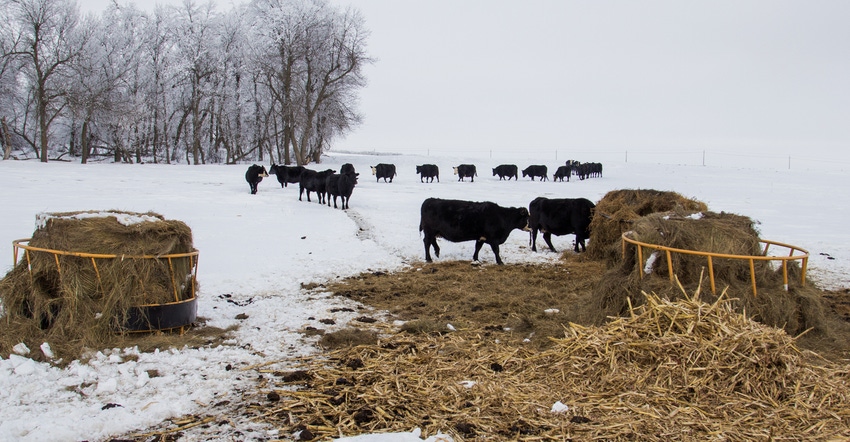The disorder can occur when cattle are being fed harvested forages.
December 9, 2020

Grass tetany is considered a problem that usually occurs when cattle or sheep are eating lush, spring grass or annual cereal forages such as rye, wheat or triticale. However, it also can occur when cattle are being fed harvested forages.
Grass tetany, sometimes called grass staggers or hypomagnesaemia, is a metabolic disorder of cattle related to a deficiency of magnesium. Magnesium is a critical mineral to the nervous system and muscle function.
Low levels of magnesium can result in cattle that exhibit hyperexcitability, reduced feed intake and muscle twitching, especially around the face and ears. Cattle also may appear uncoordinated and walk with a stiff gait.
Grass tetany is most often associated with cattle grazing immature, cool-season grasses or lush annual forages. However, tetany also can occur during the winter when cattle are being fed grass hay, alfalfa hay or annual forages harvested for hay. This is especially true if these hays are being fed in a drylot situation where they are the only source of feed.
Grass, alfalfa and cereal grains harvested for hay can be low in magnesium. A mineral analysis showing less than 0.15% magnesium in hay is considered low. When hay is low in magnesium and also low in calcium (less than 0.4%), while being simultaneously high in potassium (more than 2.5%), tetany is more likely to occur.
Recent forage test results, observed in the Nebraska Panhandle, have indicated that this could potentially be an issue with some hays harvested this year.
Forages likely to cause grass tetany often are borderline to low in magnesium while having excess levels of potassium. Usually, forages also tend to be low in sodium content. Because high potassium levels interfere with magnesium absorption, it's the excess potassium that induces tetany.
An imbalance of potassium, calcium and phosphorus in feed can hinder magnesium absorption from the digestive system into the bloodstream, magnifying the problem of a low intake of magnesium. Sodium is important in transporting magnesium into cells, so it is crucial to provide adequate sodium (salt) to ensure proper magnesium utilization.
To prevent winter tetany from harvested forages, there are several things for producers to consider.
First, test hay for mineral concentrations to identify if an imbalance of magnesium, potassium and calcium is present.
If hay tests low in magnesium (less than 0.15%) and calcium (less than 0.40%) and high in potassium (more than 2.5%), consider feeding a high-calcium, high-magnesium mineral supplement (10% to 13% magnesium for a 4-ounce target intake mineral) that also contains salt.
Because magnesium oxide is bitter, adding dried distillers grains or soybean meal at the rate of 1 pound to 50 pounds of the mineral and salt mix can help to increase intake if consumption is not at targeted levels.
In instances where cattle are being hand-fed a protein or energy supplement, supplemental magnesium also can be delivered with the feed. If this occurs, make sure access to loose salt is provided as well.
Be sure to examine the concentration of potassium in mineral supplements. If feeds are already high in potassium, feeding additional potassium in a mineral only aggravates the problem.
Another option to consider when managing hay that is high in potassium and low in magnesium is feeding hay that is higher in calcium and magnesium together with it. Alfalfa can be high in potassium as well, so be sure to test it before feeding.
Winter tetany can be an unexpected problem as most producers are not looking for it at this time of year. Through forage testing for levels of calcium, potassium, phosphorus and magnesium present, producers can determine if action may be needed to prevent winter tetany from occurring.
For more information on management and prevention of grass tetany, see these articles at beef.unl.edu.
Berger is a Nebraska Extension beef educator; Drewnoski is a Nebraska Extension beef systems specialist.
Source: UNL BeefWatch, which is solely responsible for the information provided and is wholly owned by the source. Informa Business Media and all its subsidiaries are not responsible for any of the content contained in this information asset.
You May Also Like



